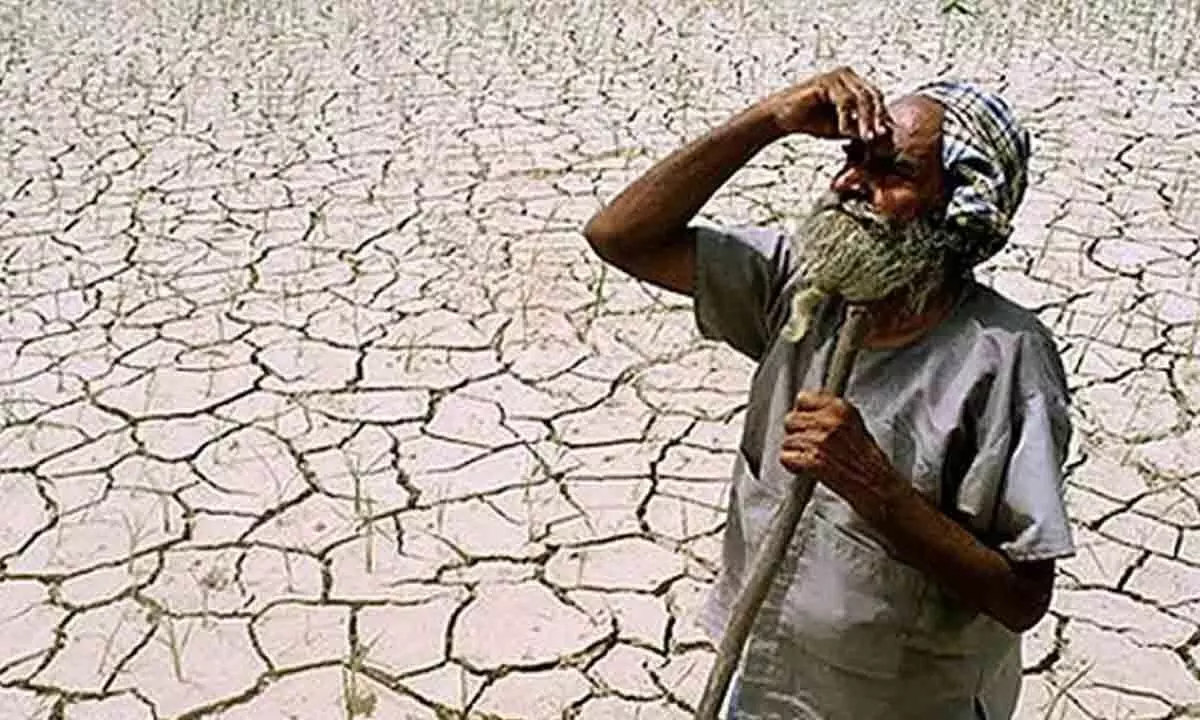Live
- Biden Pardon: Joe Biden Commutes Death Sentences of 37 Inmates, Including Child Killers and Mass Murderers
- South Korea: Yoon believes impeachment trial takes priority over martial law probe
- Strict Action for Non-Adherence to Time Management - DMHO Dr. Swarajya Lakshmi
- Over 13.29 lakh houses approved for rural poor in Maharashtra: Shivraj Chouhan
- District Collector Urges Timely Completion of Indiramma Housing Scheme Survey
- Digital Arrest Scam: Hyderabad Man Duped of ₹7 Lakhs by Fake Crime Branch Police Callers
- Sukhbir Badal seeks President's Police medal for officer who saved his life
- US Firm Accordion Acquires Merilytics, Launches 1,500-Seater Office in Hyderabad
- Free Medical Camp Organized by Alampur Advocate Bar Association
- Allu Arjun Receives Notices from Police for Further Inquiry
Just In
'El Nino after La Nina year tends to cause major rainfall deficit'


With the India Meteorological Department (IMD) predicting a normal monsoon this year despite El Nino concerns, experts say an El Nino that follows a La Nina year tends to result in a significant rainfall deficit.
New Delhi : With the India Meteorological Department (IMD) predicting a normal monsoon this year despite El Nino concerns, experts say an El Nino that follows a La Nina year tends to result in a significant rainfall deficit.
The evolving El Nino conditions this year follow three consecutive La Nina years. La Nina, which is the opposite of El Nino, typically brings good rainfall during the monsoon season.
The IMD on Tuesday predicted normal rainfall (96 per cent of the long-period average of 87 cm) in the country during the southwest monsoon season which be of great relief for the agriculture sector.
The IMD forecast came just a day after private agency Skymet Weather predicted "below-normal" monsoon rains (94 per cent of the long-period average) owing to the evolving El Nino conditions, which are generally associated with the weakening of monsoon winds and dry weather in India. Raghu Murtugudde, visiting professor, Earth System Scientist at IIT Bombay and Emeritus Professor at University of Maryland, said though only 60 per cent of El Nino years have recorded 'below normal' rainfall from in the June-September period, "analysis shows that an El Nino that follows a La Nina year tends to be the worst case scenario in terms of monsoon deficits".
The scientist, however, said that despite three consecutive years of La Nina, the Eurasian precipitation has been slightly below normal which would favour a stronger monsoon and may offset the El Nino impact. Mrutyunjay Mohapatra, Director General of Meteorology, IMD, had on Tuesday said that positive India Ocean Dipole (IOD) conditions are expected during the southwest monsoon season and the snow cover over the northern hemisphere and Eurasia has also been below normal from December 2022 to March 2023. Both these factors are considered favorable for the southwest monsoon.
According to the IMD, El Nino conditions are expected to develop around July, and their impact may be felt in the second half of the monsoon season. The IOD is defined by the difference in the sea surface temperatures between the parts of the Indian Ocean near Africa and near Indonesia.
"If at all there is any adverse impact due to the evolving El Nino conditions during the monsoon season, it is likely to be countered by the favourable impact of positive IOD and the lower snow cover over the northern hemisphere," the IMD chief had said. Murtugudde said the impact of IOD on the monsoon is not very robust. "It is likely that the monsoon itself impacts the IOD. If an IOD does occur following a normal monsoon, then the chicken-and-egg narrative will play out again. But remembering that the monsoon is a monstrous heat source and the IOD mostly occurs after the monsoon has nearly ended, we must focus on late season extremes in dry and wet spells," he said.
Dr Anjal Prakash, research director, Bharti Institute of Public Policy, Indian School of Business, said while 40 percent of the El Nino years have resulted in normal or above normal monsoon, 60 percent have seen deficient rainfall. "Why do we take smaller denominations rather than understanding the larger trends that show that El Nino has an impact on monsoon rainfall patterns," he asked. India has already seen four consecutive years of 'normal' and 'above-normal' rains during the monsoon season.
Normal rain is critical for India's agricultural landscape, with 52 per cent of the net cultivated area relying on it. It is also crucial for the replenishing of reservoirs critical for drinking water apart from power generation across the country.
Rainfed agriculture accounts for about 40 percent of the country's total food production, making it a crucial contributor to India's food security and economic stability.

© 2024 Hyderabad Media House Limited/The Hans India. All rights reserved. Powered by hocalwire.com






